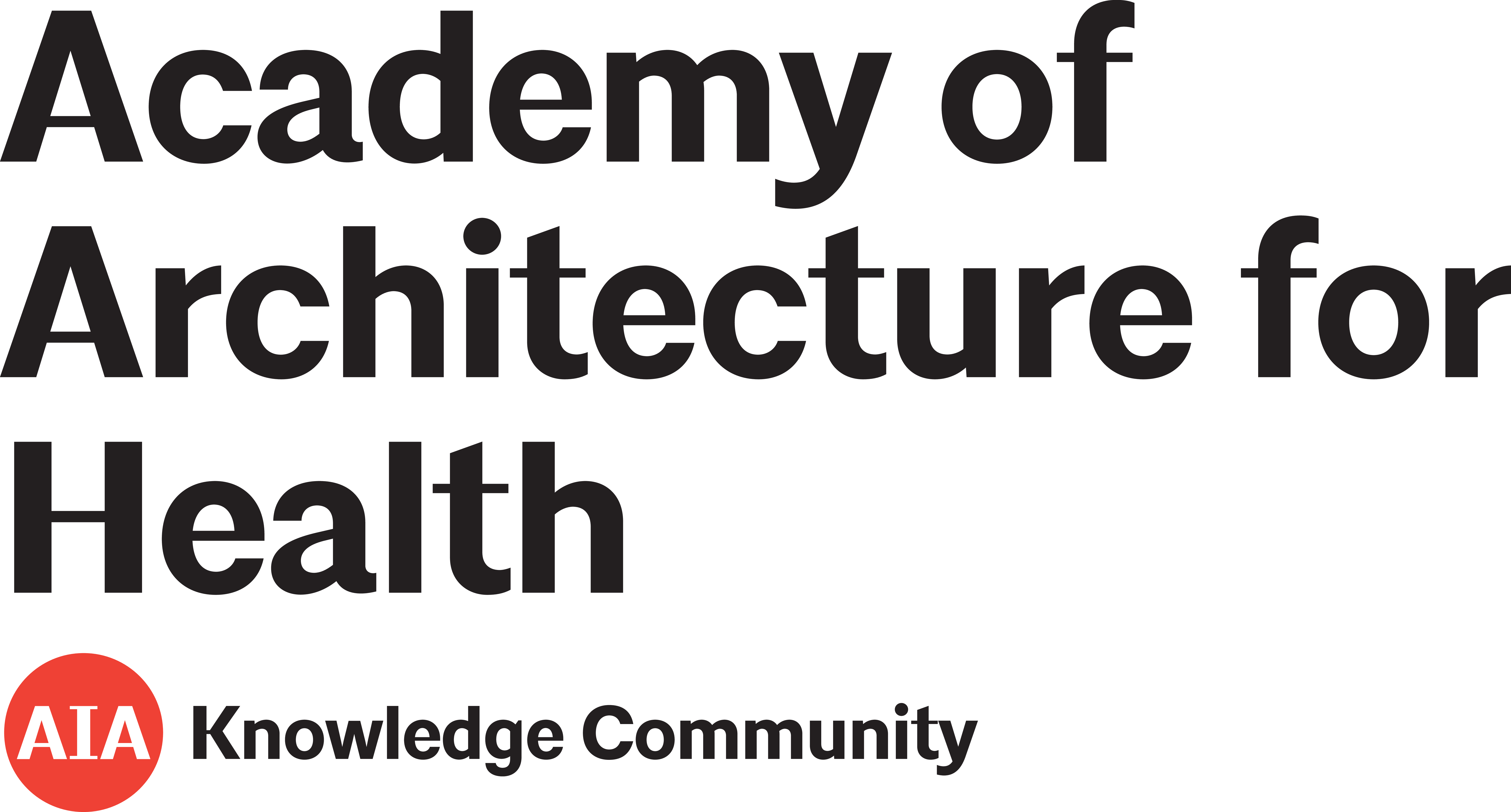Behavioral Mapping of Patient Activity to Explore the Built Environment During Rehabilitation
2018
HERD: Health Environments Research & Design Journal
Journal Article
Issue 3
Volume 11
Pages 109-123
Author(s): Blennerhassett, J. M., Borschmann, K. N., Lipson-Smith, R. A., Bernhardt, J.
Added April 2018
Alert Workplace From Healthcare Workers’ Perspective: Behavioral and Environmental Strategies to Improve Vigilance and Alertness in Healthcare Settings
2017
HERD: Health Environments Research & Design Journal
Journal Article
Issue 2
Volume 11
Pages 72-88
Author(s): Zadeh, R. S., Shepley, M., Sadatsafavi, H., Owora, A. H., Krieger, A. C.
Added February 2018
The Role of Environmental Design in Cancer Prevention, Diagnosis, Treatment, and Survivorship: A Systematic Literature Review
2018
HERD: Health Environments Research & Design Journal
Journal Article
Issue 4
Volume 11
Pages 18–32
Author(s): Gharaveis, A., Kazem-Zadeh, M.
Approximately 1.6 million new cancer cases are diagnosed annually in the United States. New techniques for treating cancer are constantly being developed, with many healthcare professionals and designers turning towards more patient-centered services and designs to achieve better patient outcomes.
Added February 2018
The Impact of Operating Room Layout on Circulating Nurse’s Work Patterns and Flow Disruptions: A Behavioral Mapping Study
2018
HERD: Health Environments Research & Design Journal
Journal Article
Issue 3
Volume 11
Pages 124–138
Author(s): Bayramzadeh, S., Joseph, A., San, D., Khoshkenar, Amin, Taaffe, K., Jafarifiroozabadi, R., Neyens, D. M.
While there are studies focused on the effect that architectural layout, space planning, and adjacencies have on workflow patterns at the unit level, there are few studies at the micro level of individual procedure rooms or surgical suites. The layout of the OR and the placement of equipment may contribute to extraneous and unnecessary movement or create barriers to safety and efficiency, resulting in surgical workflow disruption (SFDs).
Added February 2018
Acoustic environments of patient room in a typical geriatric ward
2018
Applied Acoustics
Journal Article
Author(s): Jerlehag, C., Lee, P. J., Park, S. H., Jones, T., Carroll, N.
Previous studies have thoroughly demonstrated the harmful effects of background noise within healthcare environments; one study found that high levels of background noise disrupted patient sleep cycles, while even higher levels of noise led to elevated heart rates among nurses.
Added January 2018
Developing an evidence base of best practices for integrating computerized systems into the exam room: A systematic review.
2017
Journal of the American Medical Informatics Association
Journal Article
Issue e1
Volume 24
Pages e207-e215
Author(s): Patel, M. R., Vichich, J., Lang, I., Lin, J., Zheng, Kai
The use of electronic health records (EHR) is increasing at medical facilities across the US. Computerized systems provide a better infrastructure for healthcare delivery.
Added December 2017
Clinic Design as Placebo-Using Design to Promote Healing and Support Treatments
2017
Behavioral Sciences
Journal Article
Author(s): Rehn, J., Schuster, K.
In this study the authors propose that not unlike a medical placebo effect, the built environment can impact individual judgments and behavior, especially in healthcare environment. The authors refer to this as a design placebo effect.
Added December 2017
A Diagnostic Post-Occupancy Evaluation of the Nacadia® Therapy Garden
2017
International Journal Of Environmental Research And Public Health
Journal Article
Author(s): Sidenius, U., Karlsson Nyed, P., Lygum, V. L., Stigsdotter, U. K.
The Nacadia® therapy garden was built based on the evidence-based health design in landscape architecture (EBHDL) model developed by the University of Copenhagen.
Added December 2017
Building Situation Awareness on the Move: Staff Monitoring Behavior in Clinic Corridors
2017
Qualitative Health Research
Journal Article
Issue 14
Volume 27
Pages 2244-2257
Author(s): González-Martínez, E., Bangerter, A., Lê Van, K.
Hospital staff members are responsible for remaining continuously aware of a care unit’s functioning while simultaneously performing individualized tasks in a deeply interconnected and unpredictable environment.
Added December 2017
Bright Light Delights: Effects of Daily Light Exposure on Emotions, Restactivity Cycles, Sleep and Melatonin Secretion in Severely Demented Patients
2017
Current Alzheimer Research
Journal Article
Issue 10
Volume 14
Pages 1063-1075
Author(s): Münch, M., Schmieder, M., Bieler, K., Goldbach, R., Fuhrmann, T., Zumstein, N., Vonmoos, P., Scartezzini, J.-L., Wirz-Justice, A., Cajochen, C.
Exposure to sufficient light on a daily basis is important for individuals to maintain their health. Studies have shown that light has an effect on heart rate, body temperature, human behavior, mood, body hormones, genes, and cognitive ability.
Added November 2017
Towards Healing Environment for the Inpatient Unit in Psychiatric Hospital
Author(s): Ramadan, M. G.
Previous research shows that physical designs within healthcare environments play a key role in promoting patient well-being. The design of a given healthcare facility directly affects the efficiency with which care is delivered, as well as affecting the attitudes, beliefs, and behaviors of its staff members.
Added June 2017
Environmental audits and process flow mapping to assess management of solid waste and wastewater from a healthcare facility: an Italian case study
2017
Environmental Monitoring and Assessment
Journal Article
Issue 5
Volume 189
Pages 239
Author(s): Vaccari, M., Montasser, W., Tudor, T., Leone, L.
Despite the growing number of policies and legislative drivers aiming for more sustainable resource management approaches and general environmental improvements, there is still a need for more research focusing on the improvement of waste and wastewater management.
Added June 2017
Noise Reduction in the Neonatal Intensive Care Unit: A Quality Improvement Initiative
2017
American Journal of Medical Quality
Journal Article
Issue 2
Volume 33
Pages 177-184
Author(s): Ahamed, M. F., Campbell, D., Horan, S., Rosen, O.
Elevated noise levels are regularly associated with adverse health effects among patients within healthcare environments. Infants are particularly vulnerable to elevated noise levels due to the immaturity of their auditory pathways, implying that neonatal intensive care units (NICUs) have an even greater responsibility for reducing noise levels.
Added June 2017
Designing Team Rooms for Collaboration In The Outpatient Clinics
Author(s): DuBose, J., Lim, L., Westlake, R.
Healthcare systems in the U.S. are gradually shifting from “episodic” care delivered in silos to more team-oriented and coordinated approaches. Ambulatory care environments in particular are adopting the Patient Centered Medical Home (PCMH) model, which is an integrated, team-based model designed to optimize treatment and management of patients.
Added April 2017
Mental and Behavioral Health Environments: Measurement of Building Performance
Author(s): Shepley, M. M., Watson, A., Pitts, F., Garrity, A., Spelman, E., Fronsman, A., Kelkar, J.
Added April 2017
Patient Needs and Environments for Cancer Infusion Treatment
2017
Journal of Interior Design
Journal Article
Issue 2
Volume 42
Pages 13-25
Author(s): Wang, Z., Pukszta, M.
Roughly 1.5 million Americans are diagnosed with cancer every year, and more than 50% of cancer patients receive chemotherapy for treatment. Chemotherapy is delivered through infusion, which uses an intravenous (IV) administration and support system to deliver treatment.
Added February 2017
Mental and behavioral health settings: Importance & effectiveness of environmental qualities & features as perceived by staff
2017
Journal of Environmental Psychology
Journal Article
Issue June
Volume 50
Pages 37-50
Author(s): Shepley, M. M., Watson, A., Pitts, F., Garrity, A., Spelman, E., Fronsman, A., Kelkar, J.
While many previous studies have examined how facility designs can benefit patients within non-psychiatric acute care settings, there is a lack of research exploring how physical environments can be better suited to promote the health of patients in mental and behavioral health (MBH) facilities.
Added February 2017
Investigation of Eligible Picture Categories for Use as Environmental Cues in Dementia-Sensitive Environments
2016
HERD: Health Environments Research & Design Journal
Journal Article
Issue 4
Volume 10
Pages 64-73
Author(s): Motzek, T., Bueter, K., Marquardt, G.
Dementia often manifests in populations of elderly people who are admitted to acute care facilities. The disorienting nature of hospital environments can exacerbate the condition of dementia, leading to challenging behavior from patients that can affect staff, other patients, and the patients themselves. Previous studies have found that personalized labels and signs, such as photographic portraits of residents themselves, are effective environmental markers in long-term healthcare facilities.
Added December 2016
Individualizing hospital care for children and young people with learning disabilities: it's the little things that make the difference
2015
Journal of Pediatric Nursing
Journal Article
Issue 1
Volume 30
Pages 78-86
Author(s): Oulton, K., Sell, D., Kerry, S., Gibson, F.
People with learning disabilities (LDs) represent one of the largest groups with a lifelong disability, reaching nearly 60 million people worldwide. In England alone, it is estimated that 1.5 million people live with an LD, 286,000 of them being children and young people ages 0-17. It has been found that those with LD have more hospital admissions and greater hospital stays than those children without.
Added November 2016
Surface Finish Materials: Considerations for the Neonatal Intensive Care Unit (NICU)
2016
Newborn and Infant Nursing Reviews
Journal Article
Issue 4
Volume 16
Pages 203-207
Author(s): Harris, D.
In this literature review, it is shown that a growing body of research has been focusing on how surface material finishes within neonatal intensive care units (NICUs) can contribute to the operational, clinical, and social aspects of health outcomes.
Added September 2016




